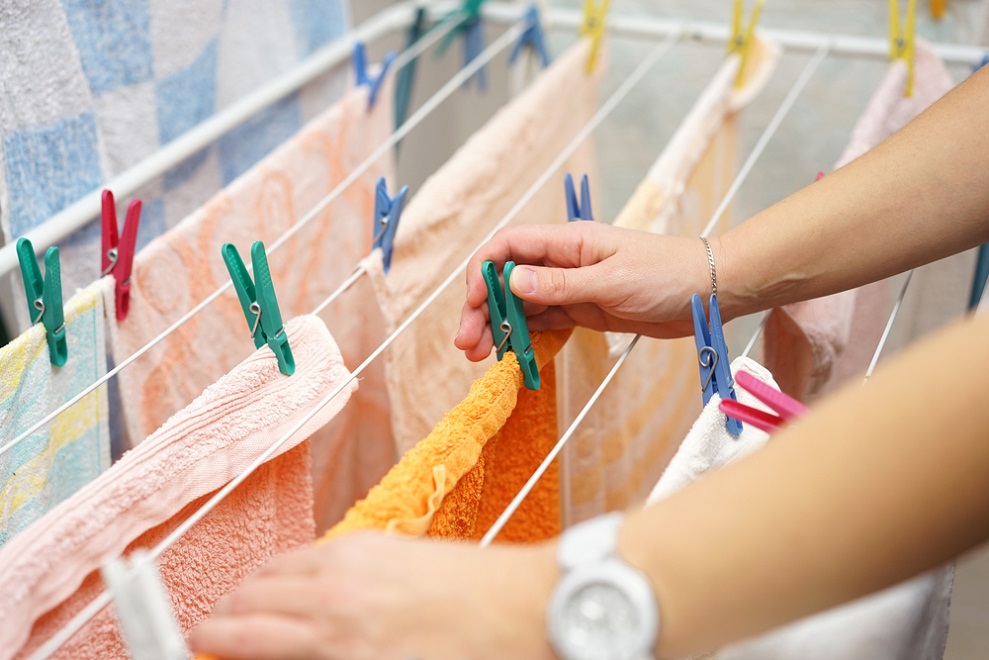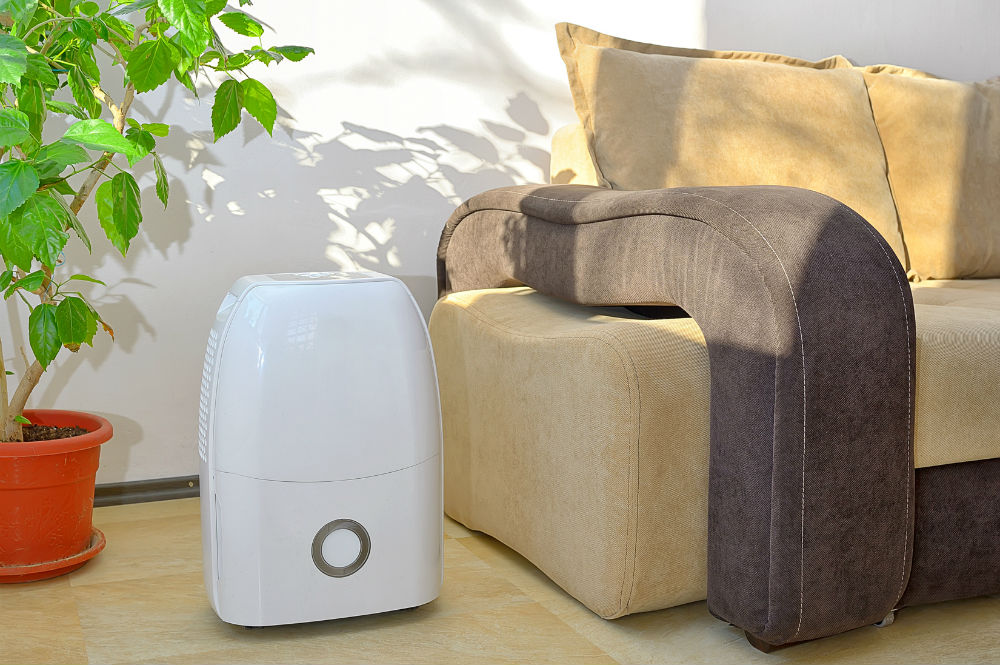In the cold, wet weather, we’re often forced to wash clothes inside. Without the luxury of radiators, a tumble drier and wires are the only way to get clothes dry. But this can take quite a while and contribute to the buildup of moist and excess moisture from your home.
If there is any moisture to escape (mainly if windows are closed tight in very cold weather), you can see a damp construction. Do you realize that your windows are operating with condensation after you do your washing machine? The development of moisture in this way may result in damage to soft furnishing, mold growth on walls, and create health problems.
Are dehumidifiers excellent for drying clothes? Read on to get the answer and help you make sure that your home is damp-free and those winter washing times become less of a hazard to your health and home.
What Does a Dehumidifier Do?
A dehumidifier works by taking moisture into the air. It draws in the air from the space through a port and moves it over a pair of chilled metal coils. When the airstrikes the cold metal, the water from the air condenses and produces droplets that fall right into a collection bucket or are drained off.
We will be covering several diverse kinds of dehumidifiers but may be portable and fixed, so if you often move wherever your laundry is put out to dry; you can move your dehumidifier with it.
Will a Dehumidifier Speed Up My Drying Laundry?

A Dehumidifier will significantly reduce the amount of time it takes for your washing to dry. The dehumidifier will fight the excessive moisture in the air, which will prevent any mold or damp building up in your home. This is very important as prolonged use of an area, or clothing horse to dry your wet washing inside will lead to additional moisture from the air.
Besides combating the excess moisture, a dehumidifier will draw wetness from the clothes themselves and assist them in drying faster. Some dehumidifiers also feature a “boost” feature that makes them run harder and can be very helpful to use as your wet laundry comes from the unit!
How to Use a Dehumidifier to Dry Your Clothes?
Using a dehumidifier to dry wet clothes is very simple. If you’ve got a portable unit, this is even easier since it is possible to transfer the device to whichever region your wet laundry is hanging in.
If you have a permanent dehumidifier, it is going to function the same. It just means you will always be required to hang your clothes in the area with the dehumidifier.
This is fine but it may affect your plans if you must use that area for entertaining, etc. Generally, wet washing should not be placed in rooms with a great deal of soft furnishings, despite the support of a dehumidifier. This indicates you should avoid hanging bathing in your bedroom if possible.
A great tip to ensure that your dehumidifier is functioning as efficiently as possible and will dry your wet clothes in no time would be to sit in a relatively small region.Dehumidifiers are put to work in various areas based on their capacity.
People have a dehumidifier which works for 1,300 square feet. For instance, you set it in a room that’s 600 square feet, and then it’ll be working efficiently and may even pull moisture from the wet clothing faster.
You should also seal off the room you’re drying your laundry in. Close doors and windows to stop your dehumidifier from working overtime to draw air from all around the house. In this way, it will merely be dehumidifying the air in the area where the washing is drying.
Will I Have to Keep Emptying a Bucket or Water Reservoir?
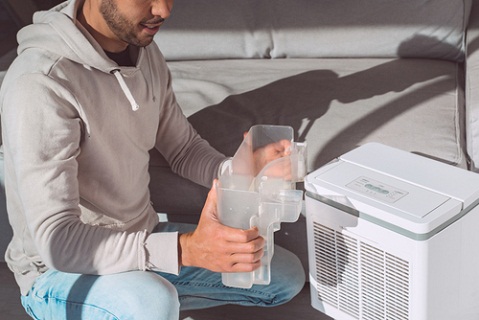
In most of the movable dehumidifiers; you’ll find a water collection bucket. This can hold fairly considerable quantities of water and usually have to be emptied once per day in ordinary operating conditions.
But if you are using the dehumidifier unit to draw water from wet clothing in a room, you might know that this water collection reservoir fills up fast.
If you’re going to choose a model with a water collection bucket to help dry your laundry, it’s well worth buying one with a big reservoir. You also need to ensure that it has an automatic shut-off function if the water bucket becomes full to stop leaking and give you peace of mind.
There is another choice. You can buy a dehumidifier unit that has a draining hose attached. These systems drain away from the water continually — reducing the need to empty a bucket.
The only drawback with these systems is that they have to be near a drain so you would have to hang your washing in a room with a drain or sink.
Tumble Drier Vs. Dehumidifier
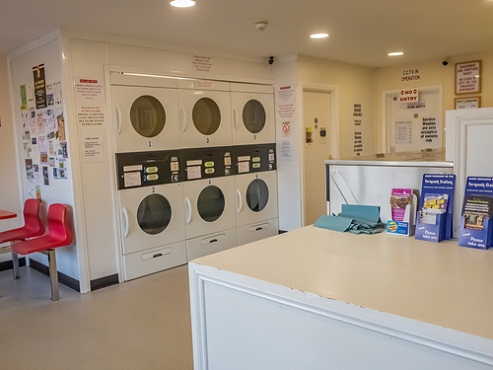
A tumble drier is the most important way people would think to wash their clothes. Yet, these can be pretty expensive to buy and even more costly to run.
Energy consumption for the typical drier is quite high, and you can quickly see a difference in your energy bills. As most people will have to use their dryer through the winter when invoices are already high because of more heating and light; the cost can be prohibitive.
Another difference between a tumble drier and a dehumidifier is the way the clothes dry. Because the dryer utilizes heat, clothes can come out feeling hard and harsh to the touch. This is because they’ve been “baked” dry. With air and a dehumidifier indicates that your clothes won’t have this stiffness.
We already know a dehumidifier costs less to use than a tumble dryer. Exactly how much less? And, how successful are they at drying clothing when compared with a tumble dryer?
Running Costs
To answer the first question, we first have to reintroduce the three significant forms of dehumidifier, and then you’ll discover availability to the home market.
The first is refrigerant (also referred to as a compressor) dehumidifiers. This sort of dehumidifier is undoubtedly the most economical to operate. In several cases costing no more than 1.5-3p an hour to use.
Generally, they’re also the strongest of dehumidifiers and can endure heavy usage for several years. The compressor pump also makes them the lightest and least portable, and they can often weigh more than 10 Kg.
The second is desiccant dehumidifiers. These are somewhat more expensive to operate, coming in at about 3-6.5p/hour. Though, the somewhat higher running cost does come with an edge.
Desiccant units are extremely good at heating the room they function within and lessen the need for an external heat source to assist your washing dry. They’re also much smaller than refrigerant dehumidifiers and can weigh as little as 6 Kg.
The last one is Peltier dehumidifiers. These are the least common sort of dehumidifier and generally can only be found in a couple of units.
We would not recommend these for washing. Many national units cannot do this, and an adequately sized water tank to collect the water generated from a load of drying clothes in 1 go.
Drying Time
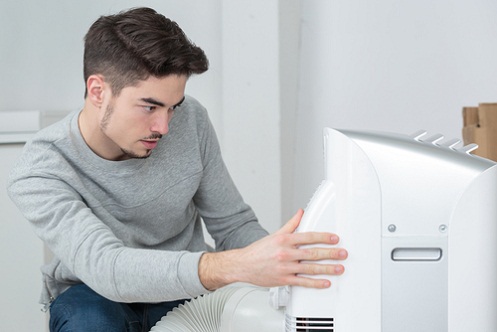
The time it requires dehumidifiers to dry your laundry is relatively longer in comparison to a tumble dryer. Generally, a tumble dryer can dry a medium load in about one hour. However, it may take 3-5 hours to get a dehumidifier to do the same job.
But, the big question is: Is that a significant disadvantage? We would say it’s not.
So Which is Better?
A dehumidifier may take longer. However, with running costs as little as approximately 4.5p/hour (on average), it will still cost less than using a tumble dryer to get the same outcome.
Additionally, the warmth generated by a dehumidifier isn’t wasted. It’s vented back into your home. In many cases (particularly with desiccant units), a dehumidifier can heat an entire room, reducing the need for any additional heating sources.
Lastly, a dehumidifier can help lower the total humidity within your house, helping to avoid condensation and making your home easier to heat as moist air isn’t as simple to heat as dry air. All in all, a dehumidifier is an exceptional alternative to a tumble dryer.
CONCLUSION
So, using a dehumidifier to dry your clothes isn’t just simple; it will also save you energy and time.
Setting up your dehumidifier in the same room as your garments will help them dry faster, and closing windows and doors means the power of your unit is focused and will work better.
I’m a degreed ME (mechanical engineer) who is passionate about machines of all kinds. I created MachineWonders.com as a way to connect with others who love machines like me – or need help choosing one for their needs, application, or situation.

